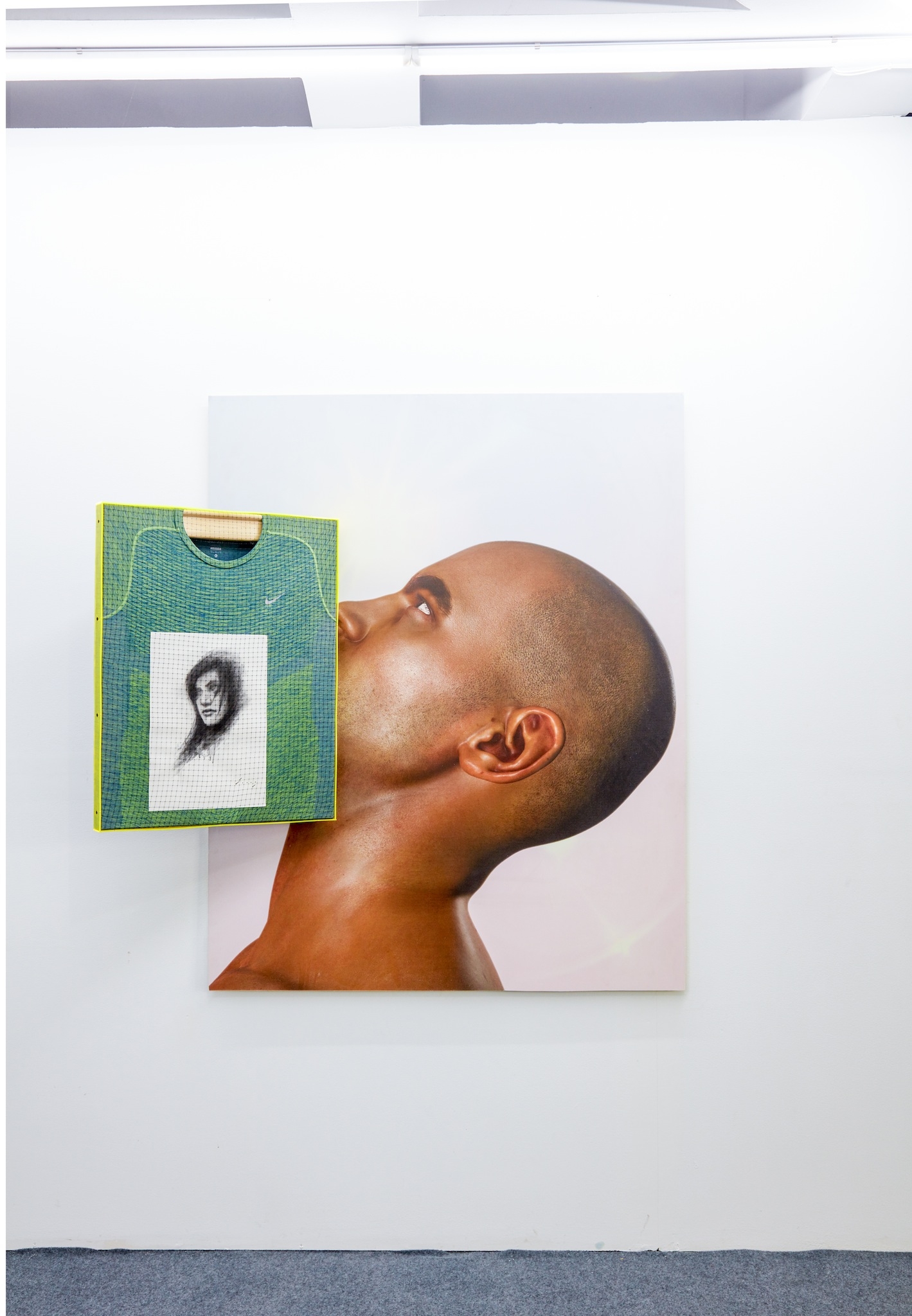Aspirations for fashion, for an artistic career and even for an alternative form of citizenship – it is all incorporated into Christopher Kulendran Thomas’s work. Among other things, he is drawing on a claim that sociology professor Alain Quemin made five years ago, namely that regional art markets would grow rapidly and simultaneously be relatively separate from the otherwise dominant Western commercial circuit. When Thomas recently showed a work from the ongoing series When Platitudes Become Form at the distinctly international Dhaka Art Summit in Bangladesh, his work played into both the regional and global circuits, into some of the crucial ways in which art is being distributed today and into how capital networks affect situated politics.
Thomas’s method is metabolistic: he buys inexpensive artworks by artists from Sri Lanka whose commercial careers are developing fast and incorporates them into his own work. Take for example Awake III (2015), by Kavinda Silva, a black-and-white naturalistic drawing of the face of a young person that Thomas has mounted on a green Nike running-vest stretched on a thin fluorescent yellow frame. It is all held together by a thin fishnet grid. The A4 drawing was purchased by Thomas from the online platform Art Space Sri Lanka, itself an example of how, due in part to economic liberalisation, Sri Lanka’s creative industries in general and the contemporary art sector in particular have blossomed since the genocidal 2009 ending of the 25-year civil war between the Tamil minority and the Sinhalese majority.
The picture with the drawing and the shirt is in turn hung on top of a large image of the profile of a man that has been glued onto the wall. The oversize man appears as a backdrop to all pictures in this presentation, like a bodyguard ready to swallow the display. This South Asian model will eventually be introduced by Thomas to TurboSquid, an online marketplace for 3D models used for all kinds of animation purposes and so far lacking types from this part of the world. The model is also part of a related venture initiated by the artist, New Eelam. New Eelam is an attempt at reimagining the defeated Tamil homeland of Eelam as a distributed network rather than a territorially bounded nation. Based on technologically enabled global citizenship and collectively co-owned housing all over the world, this postcapitalist startup plans to make it possible to live across multiple cities by disrupting traditional forms of property relations.
Thus far, the version of When Platitudes Become Form in Dhaka is fairly free-floating, as is common with works with such a post-Internet look. However, in addition to a small generic sculpture, a scent dispenser and a pot plant, Thomas’s installation features an Ikea shelf that sits in the middle and holds a pile of catalogues from the Dhaka Art Summit. This is an anchor to the here and now, which happens to be ‘the world’s largest research and exhibition platform for South Asian Art’. Initiated and organised by the Samdani Art Foundation and its founders, Nadia and Rajeeb Samdani, it was both a generous and generative event, full of contrasts and tensions between rich and poor as well as local and global participants and visitors, with a number of strong art projects and subcurated thematic, historical and architectural exhibitions. Notably, it also included work by artists from Pakistan.
According to the anthropologist Arjun Appadurai, aspiration, together with imagination and anticipation, are the vital human preoccupations we need today in order to make ‘the future a cultural fact’. Without them, he says, the future is a blind spot and missed opportunity within Appadurai’s own discipline, which tends to be busy with ‘pastness’. Instead, he propagates an engagement with times to come, with aspirations for a good life, for existence without imminent risk and for stable living conditions. My feeling is that Thomas with New Eelam, and its aspirations, wants to combine two conflicting sides of ‘the technologies of prediction’ that Appadurai mentions, ie simultaneously to encompass ‘the ethics of possibility’, which is often found in art and other imaginative activities, and ‘the ethics of probability’ championed by everything from neoclassical economy to risk management within the insurance business.
This article first appeared in the April 2016 issue of ArtReview.
